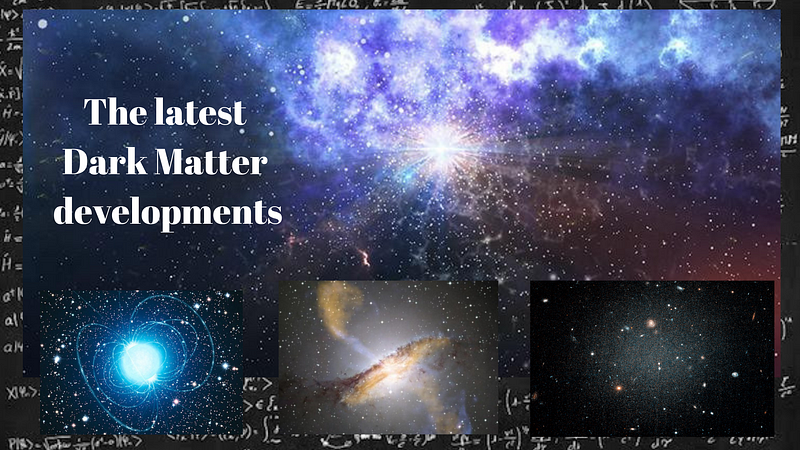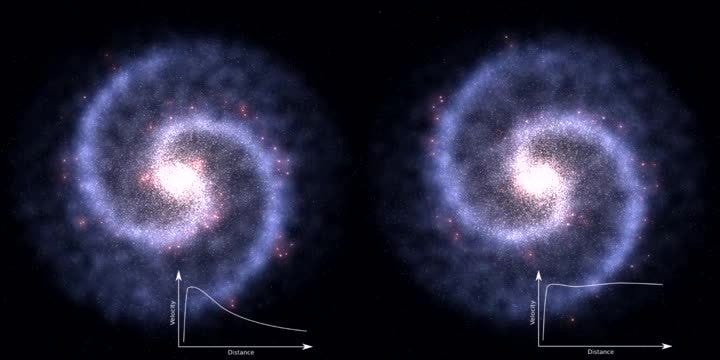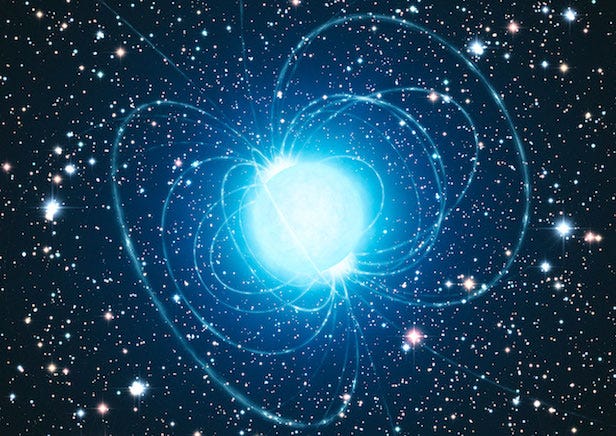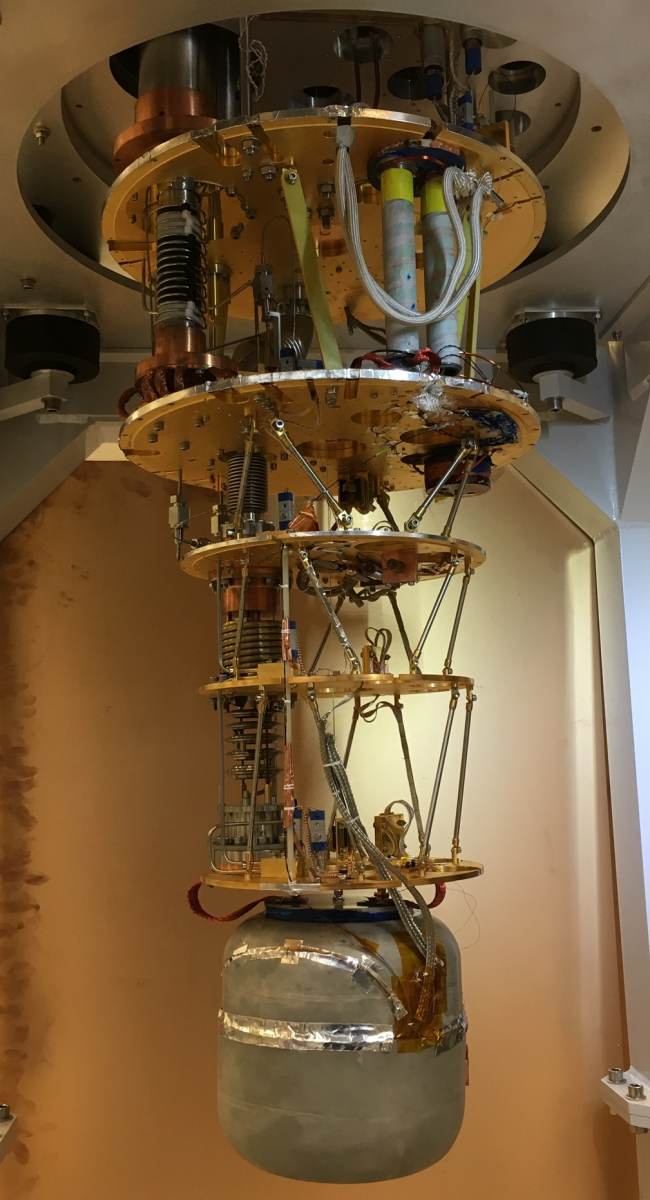Discoveries in Dark Matter: New Insights and Challenges
Written on

The Enigma of Dark Matter Continues
Researchers are making strides in understanding dark matter, the mysterious substance believed to constitute 90% of the universe's mass. In March, scientists unveiled two galaxies that appear devoid of dark matter, alongside new constraints on its properties. The search for a potential dark matter candidate, the axion, continues.
Two Galaxies Lacking Dark Matter Identified
In two independent studies, scientists are deepening our understanding of dark matter, which is estimated to account for 70–90% of the mass in the visible universe.

Ironically, the discovery of two additional galaxies without dark matter strengthens the argument for its existence, rather than leading to a re-evaluation of gravitational models. The findings, published in the Astrophysical Journal Letters, build on a previous observation of a galaxy lacking dark matter, which had left astronomers doubtful due to its singular nature.
Pieter van Dokkum, an astronomer at Yale University and lead author of last year's study, expressed concerns over the validity of their initial discovery: "When there's only one object, there's always a nagging voice asking, 'What if we're mistaken?'"
The new research highlights NGC 1052-DF2 (DF2), a galaxy located 60 million light-years away, which shows no signs of dark matter. Alongside this, another study published in the same journal described DF4, another galaxy that is dim and diffuse, again lacking any detectable dark matter.
These findings suggest there may be more galaxies that do not require dark matter for stability, offering fresh perspectives on dark matter's nature and the evolution of galaxies. Both DF2 and DF4 belong to a recently identified category known as ultra-diffuse galaxies (UDGs), which are comparable in size to the Milky Way but contain 100 to 1,000 times fewer stars, making them appear fluffy and challenging to observe.
Shany Danieli, a Yale graduate student and lead author of the DF2 study, remarked, "The discovery of something entirely new is incredibly exciting. No one knew such galaxies existed, and for an astronomy student, finding an unknown object—be it a planet, star, or galaxy—is the ultimate thrill."

These discoveries paradoxically reinforce the case for dark matter's existence, as they indicate that its effects do not solely depend on ordinary matter—contrary to what would be expected if the observed phenomena were mere anomalies in gravitational understanding.
Danieli is conducting a broad survey using the Dragonfly Telephoto Array, a telescope engineered by van Dokkum, aiming to systematically identify additional examples, followed by further observations with the Keck telescopes.
The researchers concluded, "We aim to determine how prevalent these galaxies are and whether they exist in other regions of the universe. Our goal is to gather more evidence that aligns with our current theories, advancing our understanding of one of the universe's greatest mysteries—the nature of dark matter."
While these studies focused on galaxies without dark matter, another recent study investigates potential candidates for dark matter.
Constraints on Dark Matter Properties
Collaborative research from teams in Russia, Finland, and the U.S. has imposed new constraints on theoretical models of dark matter particles, analyzing data from observations of active galactic nuclei. These findings invigorate the ongoing quest to unravel the dark matter mystery, as its precise composition remains elusive. The paper was published in the Journal of Cosmology and Astroparticle Physics.

Determining the nature of dark matter particles is crucial for contemporary particle physics. Despite expectations of discovering dark matter particles at the Large Hadron Collider, such findings did not materialize.
Consequently, many mainstream theories regarding dark matter have been rejected. Various observations confirm its existence, but the particles constituting it do not seem to fit within the Standard Model of particle physics.
Physicists are thus compelled to explore more complex possibilities. The Standard Model must be expanded to accommodate hypothetical particles with masses ranging from 100 to 10 times that of an electron, including the previously mentioned axions. The heaviest speculated particles could be 40 orders of magnitude heavier than the lightest.
One theoretical approach considers dark matter as composed of ultralight particles, such as axions, which could explain a multitude of astronomical observations. However, these particles would be so light that they would interact minimally with matter and light, complicating their study. Consequently, researchers turn to astronomical data for insight.
Sergey Troitsky, a co-author of the study and lead researcher at the Institute for Nuclear Research of the Russian Academy of Sciences, stated, "We are examining dark matter particles that are 28 orders of magnitude lighter than electrons. This concept is critical to the model we are testing."
"The gravitational interaction reveals dark matter's presence. If we attribute all observed dark matter mass to ultralight particles, it suggests an immense quantity of them. Yet, with such lightweight particles, the challenge arises: How do we shield them from acquiring effective mass through quantum corrections?"
Calculations suggest one potential solution is for these particles to interact weakly with photons—electromagnetic radiation. This provides a simpler method for investigation: observing electromagnetic radiation in space.
When the particle count is substantial, researchers can treat them as a field of particular density permeating the universe. This field oscillates coherently over vast regions approximately 100 parsecs (about 325 light-years) in size.
The oscillation period is determined by the mass of the particles. If the authors' model holds, this period should be roughly one year. As polarized radiation traverses such a field, the polarization plane oscillates in sync with this period. If such periodic changes occur, astronomical observations could detect them. The one-year cycle is advantageous, as many astronomical objects are monitored over multiple years, allowing sufficient time for polarization changes to manifest.
The study utilized data from Earth-based radio telescopes, which frequently revisit the same astronomical entities during observation cycles. These telescopes can observe distant active galactic nuclei—regions of superheated plasma near galaxy centers that emit highly polarized radiation. By monitoring these regions, researchers can track changes in polarization angles over several years.
Troitsky remarked, "Initially, it appeared that signals from individual astronomical objects exhibited sinusoidal oscillations. However, the challenge was that the sine period must correlate with dark matter particle mass, meaning it should be consistent across all objects. Our sample comprised 30 objects, and while some may have oscillated due to their intrinsic physics, the periods were never uniform."
"This indicates that our ultralight particles' interaction with radiation may indeed be limited. While we cannot assert that such particles do not exist, we have demonstrated that they do not interact with photons, thereby imposing constraints on the available models that describe dark matter's composition."
Yuri Kovalev, a co-author and lab director at the Moscow Institute of Physics and Technology and Lebedev Physical Institute of the Russian Academy of Sciences, expressed enthusiasm for the findings: "Imagine the excitement! After years studying quasars, theoretical physicists arrive, and suddenly our precise measurements of polarization are valuable for understanding dark matter."
Looking ahead, the team plans to explore manifestations of theorized heavier dark matter particles proposed by alternative models, necessitating investigations across different spectral ranges and observational techniques.
Troitsky commented, "Currently, the global effort to locate dark matter particles is ongoing. This remains one of the significant enigmas in particle physics."
"At present, no model has emerged as the preferred or most plausible in light of available experimental data. We must evaluate all possibilities. Unfortunately, dark matter is 'dark' in the sense that it interacts minimally with anything, especially light."
"In certain scenarios, it might slightly influence light waves, but other models suggest no interactions with our universe, aside from those mediated by gravity."
"This renders its particles exceedingly difficult to identify," Troitsky concluded.
Nevertheless, this challenge has not deterred an MIT-led team from pursuing searches within specific mass ranges.
Searching for Axions: A New Experiment
Physicists have initiated a new experiment to detect axions—hypothetical particles anticipated to be among the lightest in existence. If confirmed, axions would be nearly invisible yet omnipresent, constituting 85% of the universe's mass as dark matter.

Axions are unique in that they are expected to subtly alter the principles of electricity and magnetism. In a study published in Physical Review Letters, the MIT-led team reports that during the first month of observations, no signs of axions were detected within the mass range of 0.31 to 8.3 nano electronvolts.
This implies that axions within this mass spectrum—equivalent to about one quintillionth the mass of a proton—either do not exist or exert an even lesser influence on electricity and magnetism than previously assumed.
Lindley Winslow, the experiment's principal investigator, remarked, "This is the first time anyone has directly investigated this axion space."
"We're thrilled to establish that we can explore this area and improve our methodology!"
While axions are thought to be ubiquitous, they are theorized to remain nearly ghost-like, interacting minimally with other universal entities.
Winslow, the Jerrold R. Zacharias Career Development Assistant Professor of Physics at MIT, added, "As dark matter, axions shouldn't impact daily life."
"However, they are believed to influence large-scale phenomena, such as the universe's expansion and the formation of visible galaxies."

Due to their interaction with electromagnetism, axions are theorized to exhibit peculiar behavior around magnetars—neutron stars with extraordinarily strong magnetic fields. If axions are present, they could leverage the magnetar's field to transform into detectable radio waves.
In 2016, a group of MIT theorists conceptualized a thought experiment to detect axions based on magnetar behavior. Dubbed ABRACADABRA (A Broadband/Resonant Approach to Cosmic Axion Detection with an Amplifying B-field Ring Apparatus), the design was proposed by associate professor of physics Thaler, along with then-MIT Pappalardo Fellow Benjamin Safdi and former graduate student Yonatan Kahn.
The team envisioned a small, doughnut-shaped magnet maintained at ultracold temperatures just above absolute zero. In the absence of axions, the center of the doughnut should exhibit no magnetic field; Winslow described it as "where the munchkin should be." However, if axions exist, a detector should identify a magnetic field at the doughnut's center.
Following the publication of their theoretical design, Winslow, an experimentalist, sought to construct the experiment.
"We aimed to detect an axion signal that, if observed, could only be attributed to the axion because of the specific geometry we envisioned."
The experiment poses challenges due to the expected signal being less than 20 atto-Tesla; for context, Earth's magnetic field measures 30 micro-Tesla, while human brain waves are around 1 pico-Tesla.
To address these challenges, Winslow's team encountered two primary design obstacles. The first involved the refrigerator maintaining ultracold temperatures, which included mechanical pumps that could produce slight vibrations potentially obscuring axion signals.
The second challenge pertained to environmental noise from nearby radio stations, electronic devices, and even LED lights, all of which could generate competing magnetic fields.
The team resolved the first issue by suspending the entire apparatus with a thread as thin as dental floss. They addressed the second problem through a combination of cold superconducting shielding and warm shielding surrounding the experiment.
"This allowed us to collect data effectively, finding a sweet region where we were above the refrigerator's vibrations but below the environmental noise likely originating from our neighbors, enabling us to conduct the experiment."
Initially, the researchers performed tests to confirm the experiment's functionality and magnetic field accuracy. The crucial test involved injecting a magnetic field to simulate a fake axion and verifying that the detector produced the expected signal—indicating readiness to detect a genuine axion.
Winslow remarked, "By analyzing the data, we could hear the sounds produced by the refrigerator."
"We also observed other noises that varied with activities nearby, and when we focused on this sweet spot, we understood how the detector functioned, allowing us to discern the axions."

In 2018, the team conducted ABRACADABRA's first run, continuously sampling data from July to August. After analyzing the collected data, they found no evidence of axions within the mass range of 0.31 to 8.3 nano electronvolts, which could modify electricity and magnetism by more than one part in 10 billion.
The experiment is designed to detect axions of even smaller masses, reaching down to approximately 1 femto electronvolt, as well as axions as large as 1 micro electronvolt.
The team plans to continue operating the current experiment, which is roughly the size of a basketball, in search of increasingly smaller and weaker axions. Winslow is also exploring methods to scale up the experiment to the size of a compact car, which could enhance the potential for detecting even more elusive axions.
Winslow concluded, "There's a genuine possibility for significant discoveries in the next stages of the experiment."
"Our motivation lies in the chance to uncover something that could transform the field. This is high-risk, high-reward physics."
Sources
- ‘A Second Galaxy Missing Dark Matter in the NGC 1052 Group’ https://iopscience-iop-org.libezproxy.open.ac.uk/article/10.3847/2041-8213/ab0d92
- ‘Still Missing Dark Matter: KCWI High-resolution Stellar Kinematics of NGC1052-DF2’ https://iopscience.iop.org/article/10.3847/2041-8213/ab0e8c
- ‘Constraining the photon coupling of ultra-light dark-matter axion-like particles by polarization variations of parsec-scale jets in active galaxies’ https://iopscience.iop.org/article/10.1088/1475-7516/2019/02/059/meta
- ‘First Results from ABRACADABRA-10 cm: A Search for Sub-?eVAxion Dark Matter’ https://journals-aps-org.libezproxy.open.ac.uk/prl/abstract/10.1103/PhysRevLett.122.121802